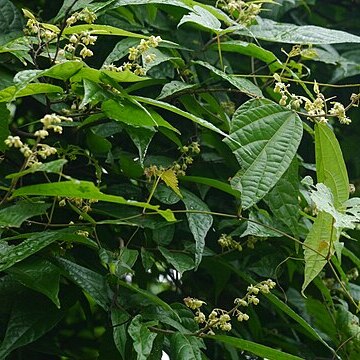A shrub or small tree. It can grow to 20 m high. The crown is dense and cylinder shaped. The trunk is slightly fluted. The leaves are 12-20 cm long by 6-8 cm wide. They are oblong but taper slightly to the tip. There can be shallow irregular teeth towards the tip. The flowers are bright yellow and about 1 cm across. They are in branched clusters at the ends of twigs. These are 3-10 cm long. The fruit are up to 1.5 cm across. They are dark green and turn black when ripe. They have one large stone.


